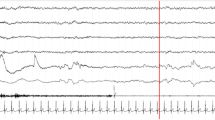Summary
The establishment of sleep medicine as a clinical discipline in the 1980s went hand in hand with a review of historical sources. Experts in sleep medicine searched the belles-lettres as well as the medical literature for references to the striking daytime symptoms of advanced obstructive sleep apnoea syndrome. This paper presents an historical account that has been overlooked so far: A case of excessive daytime sleepiness successfully treated in 1720 by the eminent German physician and surgeon Lorenz Heister (1683–1758). The physician and his patient never met in the course of the therapy, communicating instead solely by post. Heister blended the patient's letter, in which he set down his symptoms, and his own written advice into a comprehensive case report published in 1753 (in English, 1755), which allows us a glimpse into the medical world of humoralism. By following Heister's course from the identification of symptoms via an aetiological explanation to the therapeutic strategy, the paper illustrates that this early modern physician acted within a logical framework that enabled him to construct a close relation between medical theory and therapeutic practice.
Zusammenfassung
Die Etablierung der Schlafmedizin als klinischer Disziplin in den 1980er Jahren ging mit einer Sichtung der historischen Quellen einher. Experten auf dem Gebiet der Schlafmedizin studierten die schöngeistige Literatur und die medizinischen Fachpublikationen, um Hinweise auf die augenfällige Tagessymptomatik des fortgeschrittenen OSAS zu finden. Der vorliegende Beitrag präsentiert eine historische Schilderung, die bisher übersehen wurde: Einen Fall von ausgeprägter Tagesmüdigkeit aus dem Jahr 1720, den der angesehene deutsche Arzt und Chirurg Lorenz Heister (1683–1758) erfolgreich behandelte. Arzt und Patient trafen sich im Lauf der Therapie kein einziges Mal, sondern kommunizierten ausschließlich per Post. Heister verschmolz den Brief des Patienten, in dem dieser seine Symptome schilderte, und seinen eigenen schriftlichen Rat zu einem ausführlichen Fallbericht, den er 1753 (englische Ausgabe 1755) veröffentlichte, und der uns heute einen Blick in die medizinische Welt der Vier-Säfte-Lehre erlaubt. Der Aufsatz folgt dem Weg Heisters von der Benennung der Symptome über die Klärung der Ätiologie hin zum Entwurf der therapeutischen Strategie und veranschaulicht dabei das logische System, in dem sich dieser bewegte und das es ihm möglich machte, eine enge Verbindung zwischen der medizinischen Theorie und der therapeutischen Praxis herzustellen.
Similar content being viewed by others
References
Berger H: Über das Elektroenzephalogramm des Menschen. Arch Psychiatr Nervenkr 87: 527–570, 1929.
Brucker J, Haid JJ: Bilder-sal heutiges Tages lebender, und durch Gelahrtheit berühmter Schrifftsteller. J. J. Haid, Augsburg, 1741-1755.
Burwell CS, Robin ED, Whaley, RJ, Bickelmann AG: Extreme obesity associated with alveolar hypoventilation—a Pickwickian syndrome. Am J Med 21: 811–818, 1956.
Cheng TO: Brahms' illness. Chest 119: 985–986, 2000.
Chouard CH, Meyer B, Chabolle F: Napoléon souffrait-il du Syndrome d'Apnées du Sommeil? Ann Otolaryngol Chir Cervicofac 105: 299–303, 1988.
Dement WC: The study of human sleep. A historical perspective. Thorax 53: S2-S7, 1998.
Dickens C: The posthumous papers of the Pickwick club. London, 1837. Reprint: Penguin Books, London, 124, pp 75–81, 1994.
Elliot JA: A complete collection of the medical and philosophical works of John Fothergill, John Walker, London, p. 661, 1781.
Fujita S, Conway W, Zorick F: Surgical correction of anatomic abnormalities in obstructive apnea syndrome: uvulopalatopharyngoplasty. Otolaryngol Head Neck Surg 89: 923–934, 1981.
Geisler LS: Das Pickwick-Syndrom. Dtsch Med Wochenschr 96: 212–216, 1971.
Guilleminault C: Obstructive sleep apnea. The clinical syndrome and historical perspective. Med Clin North Am 69: 1187–1203, 1985.
Heister L: Medicinische, Chirurgische und Anatomische Wahrnehmungen. Johann Christian Koppe, Rostock, pp 1009–1014, 1753.
Heister L: Medical, chirurgical, and anatomical cases and observations. J. Reeves, London, pp 617–620, 1755.
Hermann M: Schlafapnoe als Krankheitskonstrukt. Die Mechanisierung und Medikalisierung des Schlafes. Campus, Frankfurt/Main, 1997.
Kryger M: Sleep apnea. From the needles of Dionysius to continuous positive airway pressure. Arch Intern Med 143: 2301–2303, 1983.
Kryger M: Fat, sleep and Charles Dickens, Literary and medical contributions to the understanding of sleep apnea. Clin Chest Med 6: 555–562, 1985.
Kryger MH, Roth T, Dement WC: Principles and practice of sleep medicine. W. B. Saunders, Philadelphia, 1989.
Kuhl W: History of clinical research on the sleep apnea syndrome. The early days of polysomnography. Respiration 64: 5–10, 1997.
Kümmel WF: Kopfarbeit und Sitzberuf. Jahrbuch des Instituts für Geschichte der Medizin der Robert-Bosch-Stiftung. Band 6. Hippokrates, Stuttgart, pp 53–70, 1989.
Lavie P: Nothing new under the moon. Historical accounts of sleep apnea syndrome. Arch Intern Med 144: 2025–2028, 1984.
London S: The whimsy syndromes. The fine art of literary nosology. Arch Intern Med 122: 448–452, 1968.
Margolis ML: Brahms' lullaby revisited. Did the composer have obstructive sleep apnea? Chest 118: 210–213, 2000.
Platter F: Observations. Vol. 1, Basel 1614. German edition: Buess HB (translator). Goldschmidt GG (ed.): Hans Huber, Bern/Stuttgart, pp 35–36, 1963.
Ruisinger MM: Auf Messers Schneide. Patientenperspektiven aus der chirurgischen Praxis Lorenz Heisters (1683–1758). Medizinhist J 36: 309–333, 2001.
Ruisinger MM: Lorenz Heister and the challenge of trepanation. A neurosurgical case study from the 18th century. J Hist Neurosci 11: 286–300, 2002.
Schiller F: Semantics of sleep. Bull Hist Med 56: 377–397, 1982.
Sullivan CE, Issa FG, Berthon-Jones M, Eves L: Reversal of obstructive sleep apnea by continuous positive airway pressure applied through the nares. Lancet 1: 862–865, 1981.
Wadd W: Cursory remarks on corpulence; or obesity considered as a disease: with a critical examination of ancient and modern opinions relative to its causes and cure. 3rd edn. Gallow Medical Bookseller, London, 1822.
Whitelaw WA, Black AJ: Sleep of the great. Respir Physiol 119: 209–217, 2000.
Wild W: Medicine-by-post in eighteenth-century Britain. The changing rhetoric of illness in doctor-patient correspondence and literature [D Phil thesis]. Brandeis University, 2001.
Author information
Authors and Affiliations
Corresponding author
Rights and permissions
About this article
Cite this article
Ruisinger, M.M. Excessive daytime sleepiness from a humoralist view. A successful treatment in 1720. Somnologie 7, 147–151 (2003). https://doi.org/10.1046/j.1432-9123.2003.00004.x
Received:
Accepted:
Issue Date:
DOI: https://doi.org/10.1046/j.1432-9123.2003.00004.x




